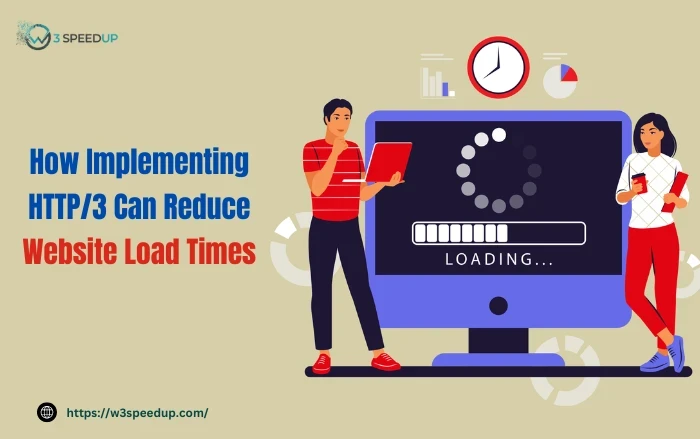Even as an average user of the internet, without any sort of technical knowledge of how things work; you must have come across the term ‘HTTP’. A shorthand version of Hypertext Transfer Protocol, it’s seen in every corner of the Internet.
HTTP is a protocol; a set of rules for establishing communication over the net. Its job is to allow web clients to talk with servers and enable the exchange of data. The first version to be developed was labeled 0.9 but was quickly followed by HTTP/1.0 and then HTTP/1.1. This one had various advanced features that made things easier for developers. This became the standard and continued to be used for years afterward.
Years later in 2015, HTTP/2.0 was developed. This greatly improved website performance and today almost every browser is familiar with this protocol. However, like with all things tech, eventually it needs upgrading.
The latest version of the protocol, HTTP/3 was published in 2022 and is already being used by 29% of all webpages. This version is quite different from its predecessors as it boasts a completely new data transfer protocol. It aims to deliver even greater performance by its primary goal: to reduce overheads and loading times.
Gaining a Competitive Edge in Online Gaming With Faster Loading Times
The move to the brand-new protocol will surely impact many websites. Nowadays, many industries operate over the Internet. One particularly well-known one is the online gaming industry. 2021 saw a new record being reached, with more than 3 billion users enjoying online games.
When it comes to playing competitively in the top 10 online games, like Fortnite and CoD, you need speed and precision. In this fast-paced environment, even the slightest of delays in website response times can cost you victory. This is why network protocols can make a difference in your ability as a gamer.
As HTTP/3 works using the new QUIC protocol, it takes care of many performance drawbacks that the previous versions of HTTP suffered from. Gone are the days when you would have to endure long website reloads before accessing the interface.
This newly achieved increase in performance and speed means that you’ll be able to play faster than ever, making moves rapidly. And when you do so, it gives you an edge over your opponents. Additionally, HTTP/3 is more stable than past versions, you’ll be able to enjoy a smoother online gaming experience.
Improving User Experience on Media Streaming Platforms with Rapid Content Delivery
Media streaming platforms have become vital in providing a modern form of entertainment. Each day we see millions of users accessing these platforms to watch content. Here, it’s extremely important that users get good speeds of content delivery as this can make or break the user experience.
The past versions of HTTP had their limitations when it came to delivering content efficiently. This is because they had a reliance on the TCP protocol. This could at times lead to certain issues like head-of-line blocking, where a packet of information fails to be delivered to the client side. This single packet could end up stalling the entire connection, contributing to a poor streaming experience.
HTTP/3’s new QUIC takes note of this and fixes this issue. Now, the speed and reliability of content delivery is greatly improved. When testing HTTP/3 on YouTube videos, the records found 20% less video stalling.
Boosting SEO Rankings with Reduced Website Load Times
How fast your website loads plays a great part in search engine optimization (SEO). This is because load speeds directly impact the user experience. In fact, Google has stated that their algorithm for ranking websites access load timings as well.
As we know by now, HTTP/3 is being implemented to reduce these load times. This will allow users to connect seamlessly to the webpage and render it without wasting time. This leads to the webpage getting higher recognition. Search engines then start to boost their SEO ranking and show it higher in search results.
Enhancing E-commerce Conversion Rates Through Swift Page Loads
The internet is a highly competitive place, where customers expect to be served instantly with ultra-fast website load times. Due to this, e-commerce sites that fail to deliver, get left behind in the dust. A study revealed that a site loading in a single second has a 2.5x conversion rate when compared to one that loads over 5 seconds.
This is where the new HTTP/3 protocol comes to shine. By pushing past the shortcomings of previous versions and reaching new performance heights, it makes efficient use of bandwidth and ensures websites load early. These improvements will directly affect the conversion rates of e-commerce websites. This is because customers will regularly engage with a website that is reliable and speedy.
improvementsWith the overwhelming performance increase in the latest version of HTTP/3, it’s clear that website owners should consider migrating to this protocol. The enhanced load times speak for themselves and have great benefits to offer both owners and clients of the webpage.
 Christmas Mega Sale – Enjoy Up to 50% OFF on Every Plan!
Christmas Mega Sale – Enjoy Up to 50% OFF on Every Plan! 



